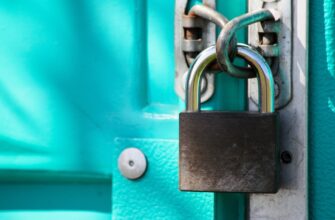When it comes to securing cryptocurrency assets, cold storage remains one of the most reliable methods. However, even the most secure cold storage setups require proper encryption of private keys to prevent unauthorized access. Encrypting private keys in cold storage is a critical best practice that ensures the safety of digital assets. This article explores the most effective methods and guidelines for encrypting private keys in cold storage, along with frequently asked questions to clarify key concepts.
### Why Encrypt Private Keys in Cold Storage?
Cold storage refers to cryptocurrency wallets stored offline, which are less vulnerable to hacking than online wallets. However, the private keys themselves must be protected. Encryption ensures that even if the physical device or storage medium is compromised, the private key remains inaccessible without the correct decryption key. This is especially important for long-term asset storage, where the risk of physical theft or digital breaches is higher.
### Best Practices for Encrypting Private Keys in Cold Storage
#### 1. Use Strong Encryption Algorithms
The first step in securing private keys is to employ robust encryption algorithms. AES-256 is widely recommended for its balance of security and performance. Ensure that the encryption method used is industry-standard and regularly updated to address emerging vulnerabilities.
#### 2. Implement Key Management Best Practices
Key management is critical. Private keys should be stored in a secure, isolated environment, such as a hardware wallet or a physically secured USB drive. Avoid storing keys in easily accessible locations, and use multi-factor authentication (MFA) for any access points.
#### 3. Secure the Storage Medium
The physical medium used for cold storage (e.g., a hardware wallet, a USB drive, or a paper wallet) must be protected. Use tamper-evident seals, store the medium in a secure location, and avoid exposing it to environmental hazards like moisture or extreme temperatures.
#### 4. Use Passwords and Passphrases Effectively
When encrypting private keys, use strong, unique passwords or passphrases. Avoid common words or patterns, and consider using a password manager to generate and store these credentials securely. Ensure that the password is not linked to other accounts or systems to minimize risk.
#### 5. Regularly Audit and Update Security Measures
Security is an ongoing process. Regularly audit your cold storage setup to identify vulnerabilities. Update encryption protocols and software to address new threats. This includes checking for firmware updates for hardware wallets and ensuring that encryption keys are not outdated.
#### 6. Implement Access Controls
Limit access to the cold storage device and encryption keys. Use role-based access controls (RBAC) to ensure only authorized individuals can access the keys. This reduces the risk of insider threats or accidental exposure.
### Common Challenges in Encrypting Private Keys
One common challenge is ensuring that the encryption process is not compromised by weak passwords or outdated algorithms. Another challenge is maintaining the physical security of the storage medium. Additionally, users may struggle with managing multiple encryption keys, leading to potential misconfigurations or forgotten passwords.
### How to Choose the Right Encryption Method
Selecting the right encryption method depends on the specific use case and security requirements. For example, AES-256 is ideal for high-security environments, while symmetric encryption may suffice for less sensitive applications. Always evaluate the encryption method’s compatibility with your cold storage hardware and software.
### What to Do if the Private Key is Lost or Compromised
If a private key is lost or compromised, immediate action is necessary. For a lost key, consider using a recovery phrase (if available) to restore the wallet. For a compromised key, initiate a key recovery process or consult a security expert. In either case, avoid using the compromised key in any transaction to prevent further damage.
### Frequently Asked Questions (FAQ)
**Q: What is cold storage for cryptocurrency?**
A: Cold storage refers to cryptocurrency wallets stored offline, which are less vulnerable to hacking than online wallets. It is ideal for long-term asset storage.
**Q: How do I encrypt my private key in cold storage?**
A: Use strong encryption algorithms like AES-256, secure the storage medium, and implement robust access controls. Always use unique passwords and avoid common patterns.
**Q: What happens if my private key is lost?**
A: If a private key is lost, you may need to use a recovery phrase (if available) to restore the wallet. If the key is compromised, take immediate steps to secure your assets and consult a security expert.
**Q: Is it safe to store private keys in a hardware wallet?**
A: Yes, hardware wallets are designed for secure storage of private keys. They use encryption and physical security features to protect against unauthorized access.
**Q: How often should I update my cold storage security measures?**
A: Regularly audit and update your security measures to address new threats. This includes updating firmware, encryption protocols, and access controls.
By following these best practices, users can significantly enhance the security of their cryptocurrency assets. Encrypting private keys in cold storage is not just a recommendation—it is a necessity in today’s digital landscape. Stay informed, stay secure, and always prioritize the protection of your digital assets.








